Automation blog

Revolutionising Quality Control: AI and Data Capture Transform Manufacturing
12 March, 2025 Maintaining consistent product quality in modern manufacturing can feel like a relentless challenge. Just as one issue is resolved, another arises to test your processes to their limits. Whether you're a production manager keeping the assembly line efficient, an engineer integrating new technologies, a salesperson offering innovative solutions, or a machine builder designing the next generation of equipment, product defects are a common hurdle.But what if there was a way to significantly reduce these defects, meet regulatory requirements with ease, and enhance overall business performance? Next generation technologies leveraging Artificial Intelligence (AI) and advanced product data capture may be the solutions you need.Specifically, we are referring to four cutting-edge technologies making a significant impact on quality control: Automated Traceability: Monitoring every product's journey through data capture. AI Vision Systems: Enhancing inspection beyond human capabilities. Digital Watermarking: Protecting product integrity through embedded data. AI-Driven Sealing Solutions: Perfecting packaging with intelligent adjustments. In this blog, we’ll explore how these technologies can help you achieve excellence in quality control, no matter your role in the manufacturing sector.
Optimising Production: How Smart Maintenance Technologies Are Changing the Game
21 January, 2025 Unplanned downtime is sabotaging production goals. It's time to take action.Unexpected machine stoppages aren't just inconveniences—they represent costly disruptions that derail schedules, increase operational expenses, and reduce profitability. Efficiency and reliability are crucial factors for maintaining competitiveness in manufacturing, so, minimising productivity losses such as unplanned downtime must be a strategic priority for both small and medium enterprises (SMEs) and large corporations.But what if you could anticipate equipment failures before they happen, deploy machines designed with maintenance in mind, and minimise fault finding? Smart maintenance technologies are making all of these a reality, transforming operations from reactive firefighting to proactive problem-solving.In this blog, we’ll explore how predictive maintenance, intelligent machine design, and advanced diagnostics are helping manufacturers reduce downtime, optimise costs, and stay ahead in an ever-evolving industry.
Navigating the new machinery directive
16 January, 2025 The European Union’s transition from the 2006/42/EC Machinery Directive to the new Machinery Regulation (2023/1230/EU), effective January 20, 2027, represents a significant shift in legislative requirements for machinery and related products. For system integrators, the regulation introduces stricter requirements for the incorporation of AI-driven systems, autonomous machines, and interconnected equipment. For end users, especially those operating complex machinery systems, preparing for these changes is a strategic necessity.
Creating smarter, faster, and simpler multi-robot packaging lines?
16 January, 2025 Does integrating robotics into a packaging line feel like solving a puzzle with too many pieces? Designing a high-performing packaging line with multiple robots often involves navigating complex integrations, precise motion control, and the need to meet tight production demands. Whether you are a System Integrator crafting tailored solutions for specific client needs or an OEM developing scalable, standardized systems, the OMRON Robotics Packaging Library provides the tools to simplify integration and reduce engineering time. Here’s how the Robotics Packaging Library helps you improve performance and reduce complexity in packaging automation.
From optimization to autonomy - Top five manufacturing automation trends for 2025 from OMRON
04 January, 2025 As we step into 2025, the world of industrial automation is approaching a new chapter. According to OMRON's SINIC Theory, which ties technological advances to societal change, we’re now moving from the Optimization Society to the Autonomous Society. The theory, created in 1970 by OMRON’s founder Kazuma Tateishi, predicts future societal and technological developments to guide innovation. In the Optimization phase, the focus has been on refining processes, boosting efficiency, and using technology to improve operations. But the Autonomous Society is a whole new era—one where systems don’t just run efficiently; they become self-regulating, self-learning, and capable of independent decision-making.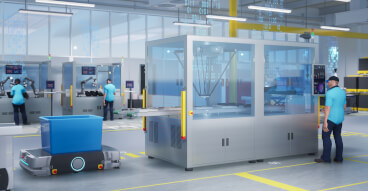
Securing a battery-powered future through automated recycling
17 December, 2024 Batteries have a crucial role to play in facilitating the scaling up of renewables in the power mix and the electrification of transport, as we transition away from fossil fuel dependence and towards cleaner energy technologies to meet the targets agreed at COP 28.This has sent the battery market on an upwards trajectory, with two sectors - power and transport - driving demand. According to the International Energy Agency (IEA), the energy sector accounts for over 90% of overall battery demand. It reported that in 2023 alone, battery deployment in this sector increased by more than 130% year-on-year, adding a total of 42 gigawatts (GW) to electricity systems around the world. Energy storage is emerging as a major application for batteries as a means of capturing renewable energy and is only going to become more important in the future. In the transport sector, meanwhile, batteries have facilitated the rise of electric cars, bikes, trucks, buses and other battery-powered vehicles.
Beyond tech for tech’s sake: What happens when industrial automation meets operational excellence
30 November, 2024 The past few years have seen rapid technological advancements, with the rise of AI standing out as a key trend. In a survey of manufacturers across the UK, US, and Canada, 70% said they had implemented some form of AI into their operations. This willingness to embrace new technologies is impressive, especially since manufacturing industries have so much to gain from automation.
Taking the first steps to successful digitalisation
12 November, 2024 Building a digital factory isn’t an end or a reason in itself. A digital factory is a tool that gives manufacturing businesses the flexibility to respond to changes in the market - whether that is innovation trends or cost increases, and whether they are operating in the food & beverage, personal care, pharmaceutical or automotive sector.
PPWR: why cross-chain collaboration, traceability and smart packaging are key
24 September, 2024 According to Eurostat figures, in 2021, each person living in the EU generated 188.7 kg packaging - almost 32 kg more than in 2011. Over this period, the amount of plastic packaging waste increased by 27%. Whilst recycling rates have also increased, a large volume of plastic packaging is still not being recycled - the latest statistics suggest that only a handful of countries in Europe are achieving a 50% recycling rate for plastics. Recognising that the existing legal framework was failing to drive improvement in packaging waste reduction, in 2022 the Commission proposed a revision to the 2018 directive for Packaging and Packaging Waste Regulation (PPWR).The revised PPWR is expected to enter into force by end of this year, and will fundamentally change the way packaging is designed, consumed and disposed of. The updated regulation is broad in its scope, but the underlying aims are to reduce the amount of packaging waste generated and increase packaging recyclability.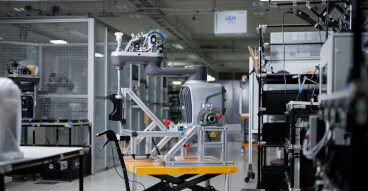
Avoiding efficiency blockage: Why companies should not postpone their robotics plans?
24 September, 2024 Delaying investments in innovative technologies is associated with numerous risks. Companies that are still hesitant should ask themselves three questions.The European economy faces a range of challenges that impact its growth, stability, and competitiveness. Europe, for example, has one of the oldest populations in the world. An aging workforce increases the burden on social security systems and reduces the labor supply, potentially slowing economic growth. Furthermore, the EU's commitment to the Green Deal and achieving carbon neutrality by 2050 requires substantial investments and structural changes in various sectors. Added to this is a lack of willingness to invest due to financial worries. A recent study by the McKinsey Global Institute (MGI) found that large European firms with more than $1 billion in revenue have fallen behind their US counterparts. They collectively invest $400 billion a year less and grow one-third more slowly.This investment fatigue can lead to several problems that have both short- and long-term effects, including disadvantages in terms of competitiveness, sustainability, and reputation, lower productivity, and less success in attracting new skilled workers. Innovative robotics can counteract such developments but also requires well-thought-out financing. Therefore, companies that are currently limiting their investments should urgently ask themselves whether this will not have more negative consequences for them in the long term than short-term savings. The following three questions should be the focus of such considerations:
Digitising with open standards: the recipe for a good night’s sleep
02 September, 2024 Can we commit to the predictions I have made? Will we be able to deliver to the deadline? Do I have enough insight to know for sure? How is the factory doing in terms of QCDE (quality, cost, delivery time and environmental impact) against our targets and compared to the competition? These are some of the concerns that keep factory managers awake at night; concerns that can be addressed through digitisation. In a digitised production environment, factory managers don’t have to worry about the unknowns, the risks and the might-happens. Digitisation eliminates uncertainty and enables performance-driven optimisation. It provides insights that can help factory managers improve quality, reduce cost, shorten lead times and reduce environmental impact. The manager of a digitised factory shouldn’t wake up worrying in the middle of the night, but if they do, a brief glance at their mobile phone should reassure them that everything is running as it should be. However, moving from a state of anxiety-induced insomnia to one of blissful somnolence is not easy. Put bluntly, digitisation can be quite tedious. Project leaders rarely have the luxury of working with a blank canvas; most of the time they are working with a patchwork quilt of old technologies sewn together; they are trying to digitise production lines incorporating machines that have never logged data and were built before data communication protocols even existed. This all adds up to a sizeable OT and IT integration challenge.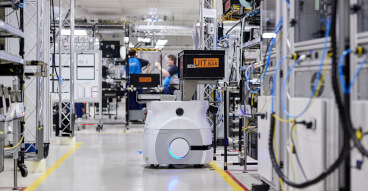
Dynamic lineside replenishment: a strategic response to today’s manufacturing challenges
15 July, 2024 It’s time for a rethink on lineside replenishment systems and practices, if manufacturers are to remain efficient and competitive whilst meeting the challenges posed by customisation and labour shortages. Could AMRs and cobots be the answer? The customisation trend has created numerous operational challenges for manufacturers; the need to accommodate a wider array of components and materials introduces variability that traditional systems struggle to manage efficiently. This can lead to increased inventory costs, longer lead times and production delays. Empirical data underscores the impact of customisation on manufacturing operations; manufacturers reported to have faced extended lead times, higher production costs, and the need to manage multiple inventories. These figures illustrate the tangible challenges that customisation poses, necessitating innovative approaches to manage this complexity efficiently.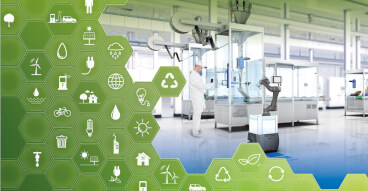
Automation adapts to sustainable packaging
16 August, 2022 Have you ever ordered a small item online, and then felt incensed when it arrived in an oversized box packed out with bubble wrap, air-filled cushions or paper inserts?
Powering the European automotive industry
29 January, 2021 The European automotive industry is facing strong competition from Asia, as well as the economic challenges of the pandemic. It needs to develop innovative, future-proof strategies and technologies that will boost both efficiency and sustainability. Tony Seba from Stanford University believes that by 2025, no more new vehicles with (pure) combustion engines will be sold and there will be a move towards battery or hydrogen-powered fuel cells. Meanwhile, the industry faces falling sales, increasingly strict emissions regulations, new technologies, digitisation and changing consumer needs. Companies must respond by converting their production lines; becoming more agile; and introducing innovations that provide a competitive edge.
Data paradise factory floor: get more out of your machine and production information
25 September, 2020 Strategic Data Science is an essential pillar of every Industry 4.0 scenario. A four-step data mining approach based on CRISP-DM supports successful projects.
Get the full value from your factory floor data with data sciences
19 June, 2020 Industry 4.0 and IIoT have been buzz words for several years and these concepts are actually implemented on more and more machines. A huge amount of data becomes available: machine data, data of the production process and data regarding the manufactured product. Big Data has entered the factory floor.
Energizing European battery cell production
01 May, 2020 What can European automotive companies do to future-proof their production lines, especially in relation to battery manufacturing? Robotics, automated quality control and artificial intelligence (AI) can help companies to tackle the strong competition they are facing from Asia.
How industrial companies are catching up in the AI race
16 December, 2019 Artificial intelligence (AI) is achieving breakthroughs in the industrial sector. McKinsey recently forecasted that the global market for AI-based services, software and hardware will grow by up to 25% annually and will be worth around US$130 billion by 2025. But AI also represents a major challenge for industries in Europe, which are lagging behind the US and China. So, how can we start putting AI into action? Predictive maintenance is one area that demonstrates its advantages and potential.
Smart machines: laying the golden egg?
16 October, 2019 Greater manufacturing efficiency: it’s the golden egg we’re all looking for. But it’s getting increasingly hard to find. The solution could be smarter automation, which involves lots and lots of data (‘big data’) and data collection and data-driven modelling. The smart machine then uses the models to automatically adjust its own behaviour (i.e. machine learning).
Improve OEE with Artificial Intelligence at the Edge in Food Manufacturing
16 October, 2019 Implementation of Artificial Intelligence (AI) in food manufacturing is picking up speed. Many F&B companies are realizing that AI presents an opportunity to increase not only the Overall Equipment Effectiveness (OEE) – and therefore combine reduced costs with increased productivity – but also to improve the analysis of data to support continuous improvement programs such as reducing waste or process operations variability.
Top 4 Ways to Tackle Labour Shortage with Automation
06 September, 2023 Automation is a pathway to supporting manual workforce and not replacing them.Labour shortages in manufacturing are a growing cause of concern worldwide. While financial incentives and targeted workforce qualifications have been used as countermeasures, more innovative solutions are needed. Many manufacturers choose to automate repetitive activities but to what extent is it supporting the existing taskforce or is it taking away their jobs altogether?In 2023, Reuters disclosed an alarming trend: a record-high 53% of companies grapple with hiring difficulties. Staff shortages, soaring energy costs, combined with the pursuit of climate neutrality create new challenges. In the quest for sustainable manufacturing, innovative strategies to address labour gaps and enhance existing talent are the beacon of progress.Let us go over the top four ways to addressing the labour shortage and supporting the current workforce with automation:
Easy programming
21 June, 2023 Omron Automation robotics are designed to be easy to program, even for users who have little or no experience with robotics. The robots can be programmed using intuitive software, and they can be taught new tasks through a simple "teach and playback" process. This makes it easy for manufacturers to integrate robotics into their production processes and improve their Pick & Place operations. With easy programming, manufacturers can reduce the learning curve and training time for operators, allowing them to get up and running quickly.
High-speed and precision movements
14 June, 2023 Omron Automation robotics are designed for high-speed and precision movements, which make them ideal for Pick & Place applications. The robots can pick up and place objects quickly and accurately, reducing cycle times and increasing productivity. Omron robots can move at high speeds without sacrificing precision, which is essential for Pick & Place applications where objects need to be placed in precise locations. With Omron Automation robotics, manufacturers can improve their production efficiency.Pick & Place applications are a common task in industrial settings, where objects need to be moved from one place to another quickly and accurately. This can be a repetitive and time-consuming task that can be automated using robotics solutions. In this blog post, we will explore how robotics can help with Pick & Place applications and improve productivity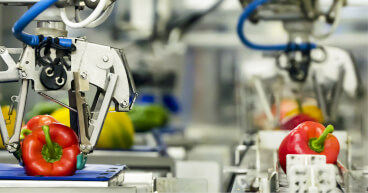
Flexible configurations
07 June, 2023 Omron Automation robotics can be configured in a variety of ways to suit different Pick & Place applications. The robots can be mounted on a fixed base or on a mobile platform, and they can be equipped with different end effectors to handle a wide range of objects. With Omron Automation robotics, manufacturers can customise the robots to meet their specific needs, allowing them to handle objects of different sizes, shapes, and weights.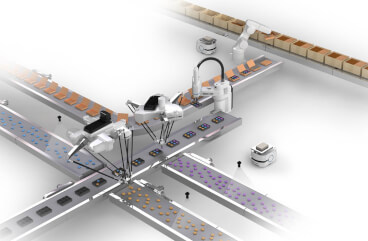
Collaborative capabilities
31 May, 2023 Omron Automation robotics can be used in collaborative applications, where they work alongside human operators to pick up and place objects. The robots are designed to be safe to work around, with sensors and other safety features that prevent collisions and other accidents. This allows manufacturers to use collaborative robotics in a wide range of applications, improving productivity and efficiency while maintaining a safe work environment. With collaborative capabilities, manufacturers can take advantage of the benefits of automation while still maintaining a human touch in their production processes.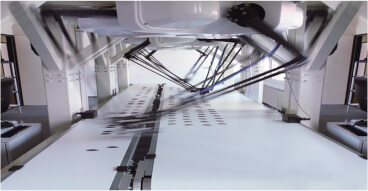
Introduction to Pick & Place applications and Omron Automation Robotics
08 May, 2023 Pick & Place applications are a common task in industrial settings, where objects need to be moved from one place to another quickly and accurately. This can be a repetitive and time-consuming task that can be automated using robotics solutions. In this blog post, we will explore how robotics can help with Pick & Place applications and improve productivity
Traceability
13 April, 2023 During this series of blogs focusing on Traceability we will discover how traceability in manufacturing has evolved over time from its first iteration to today’s evolution Traceability 4.0.Traceability definitions have been evolving since the invention of automatic data capture equipment – primarily barcode readers – over 40 years ago. Since then, traceability applications have evolved to support industrial development from both a product technology and business process perspective.The breadth and scope of traceability has expanded significantly over the years along with advances in technology, making it a critical application for today’s world-class manufacturers. In this post will explore the evolution of traceability and explain why the latest phase, Traceability 4.0, is not just about tracking products throughout the supply chain but also optimising productivity, quality and brand reputation within the manufacturing operation by tying product to process parameters.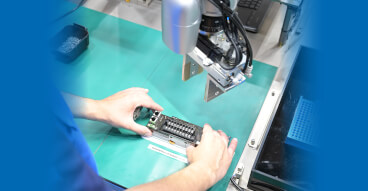
Top 5 automation predictions for 2023 from OMRON Europe
01 February, 2023 While a new year is upon us, with all its opportunities, I'd like to highlight some of the top trends that will impact and shape industrial automation in 2023 and beyond. The manufacturing industries will continue to face many challenges, and riding them out will involve building resilience and flexibility into business models. At the same time, companies must embrace emerging technologies - sensing, robotics, 5G and artificial intelligence - to help them solve the problems they face due to societal challenges.
Riders of the storm: navigating economic uncertainty by turning social challenges into tech opportunities
06 December, 2022 One of the questions I am often asked is what our strategy is, as an industrial automation business, for maintaining stable growth in a volatile and increasingly unpredictable global economy. My answer, as you might imagine, is not one sentence, although it is rooted in one concept: SINIC. SINIC stands for ‘Seed-Innovation to Need-Impetus Cyclic Evolution’ and is a theory that was developed by OMRON's founder, Dr. Kazuma Tateisi, in 1970. According to this philosophy, science, technology and society share a cyclical relationship, mutually impacting and influencing each other. Scientific breakthroughs help society to advance and social needs spur on technological development. OMRON Europe has always followed this philosophy, and has spent the last decade laying the foundations for creating value-adding solutions to present day social and economic challenges.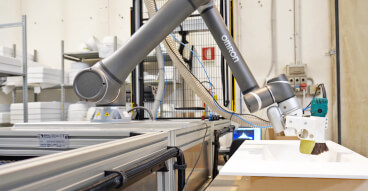
Four Automation Tips for SMEs
25 November, 2022 Corporate leaders around the world are currently facing one challenge after another: In addition to the exploding costs caused by the energy crisis, there are supply chain problems, a shortage of skilled workers, sustainability requirements, and advancing digitization issues. In particular, small and medium-sized enterprises (SME) need to quickly find ways to address these hurdles. Automation provides a remedy – this includes robotics such as cobots and AMR (autonomous mobile robots), as well as sensors, vision, and AI technology. While companies are well aware of the benefits of such technologies, studies also show that many remain skeptical of their actual use.Especially companies without application experience fear that the use of robots could be accompanied by high costs. So if you are currently wondering whether the purchase of a collaborative or mobile robot is worthwhile for your own business, OMRON's new ROI calculator will help. It provides a quick overview of the return on investment and shows when a robotics investment will cover its costs.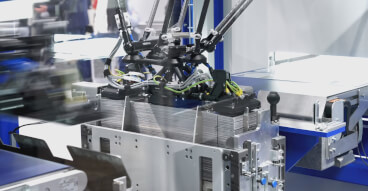
Digitalization in the automotive industry: Seven tips for smart production
02 November, 2022 If you want to grow and master crises, you have to be digitally fit – this also applies to the important automotive sector. There is no way around digital tools for addressing customers or productivity. Artificial intelligence (AI) and sustainability are key drivers and focus topics, as a study by Capgemini shows. Experts from Gartner point out the importance of open-source collaboration approaches, holistic ecosystems, and technology partnerships. But what should we look out for in digitalization and intralogistics in the production of the future? We want to answer this question in two parts. We start with tips on digitization in the smart factory. As an automation expert, OMRON has been accompanying manufacturers and suppliers on their way to more digitalization sophistication for many years.
Flexible Manufacturing Roadshow: Taking the factory of the future across Europe
16 June, 2022 What if you could see, feel and touch the factory of the future? What does it take to realize flexible, efficient, and sustainable production? This is the idea behind OMRON’s unique Flexible Manufacturing Roadshow travelling across Europe this year. The roadshow features exclusive demonstrations of human-machine collaborative solutions not usually seen outside of a factory setting due to their size and scale.
Robotic Trends 2024: Simple and flexible application essential to reach full potential
15 July, 2024 From load carrier to colleague to team player: the role of robots has changed dramatically over the past seven decades. AI is creating more possibilities, but humans remain the determining factor. Robots or humans – who will determine production in the future? Since George Devol's 1954 patent for a programmable manipulator, this question has sparked debate. Devol's Unimate robot revolutionized industry by safely performing dangerous tasks, highlighting that the focus isn't robots vs. humans but rather "robot + human = efficiency." Over 70 years, industry demands have evolved to prioritize flexibility, scalability, adaptability, and sustainability. Robots handle tasks that free humans to focus on value-added activities.
What’s in store for automation in 2024? Six predictions from OMRON Europe
13 December, 2023 The succession of shocks over the last few years has heralded a new era of heightened geopolitical and economic risk. This is prompting manufacturers to build resilience and flexibility into business models and rethink global supply chains and relationships. At the same time, pressure is mounting to incorporate ESG principles into operational decision making. AI, data science, digital twins and sensing, monitoring and vision technology will all be essential to developing automation and control solutions that can help the manufacturing industry adapt to this new reality. In this context, I would like to share the top six trends that will impact and shape industrial automation in 2024 and beyond.
EV transition made easy: Top three challenges to overcome in automotive manufacturing
23 November, 2023 The transition to electric vehicles is a challenging path for automotive manufacturers. Long-established companies that have traditionally produced vehicles with combustion engines are now venturing into an entirely new realm of vehicle platforms. Let us investigate the top challenges facing the electric vehicle manufacturing industry and explore the latest innovative solutions on the horizon.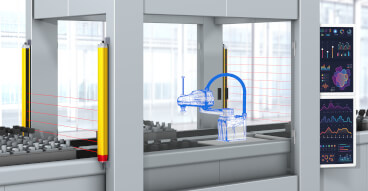
A meeting of minds: IT/OT convergence in industrial automation
22 September, 2023 Future-focused manufacturers are edging closer to their ideals of flexible, efficient and sustainable production by exploring digital transformation in earnest. However, as interest in digitalisation builds, it is becoming apparent that a huge gulf exists between the worlds of OT (Operational Technology) and IT (Information Technology). And this divide needs to be bridged if today’s visions for factories of the future are to become tomorrow’s reality.But before we look at why a convergence of IT and OT is necessary and how this can be achieved, let’s take a step back to basics and clear up some misunderstandings around the terminology.
Empowering the workforce: OMRON's approach to skills development in European manufacturing
06 September, 2023 Delving into OMRON's unwavering commitment to nurturing skills that empower the next generation, while the industry embarks on a transformative journey – a journey that unlocks the full potential of the Fourth Industrial Revolution (4IR) while boldly moving towards the Fifth Industrial Revolution (5IR).In the halls of academia, the boardrooms of visionary business leaders, and the chambers of forward-thinking politicians, a fervent debate evokes. It revolves around the profound shift from the Fourth Industrial Revolution, 4IR, or Industry 4.0 as it is also known, to Industry 5.0 will change the world in which we live.Historically the Industrial Revolution was the First Machine Age, and electricity the Second, then electronics was the Third, and the internet as platform the Fourth Machine Age. We are now entering the Fifth Machine Age, which highlights harmonious human-machine collaboration and the contributions of the industry to society. This is the moment to not only adapt but to lead, to pioneer, and to create a future where innovation knows no bounds. Klaus Schwab, the founder and executive chairman of the World Economic Forum has observed that: “We stand on the brink of a technological revolution that will fundamentally alter the way we live, work, and relate to one another. In its scale, scope, and complexity, the transformation will be unlike anything humankind has experienced before. Our world is undergoing a transformative shift. Global production is evolving, driven by the automation of traditional industrial practices through smart technology, M2M communication, and IoT integration. This synergy fuels heightened automation, seamless communication, and intelligent machines that autonomously analyse and diagnose challenges.The rise of AI sparks debates, hinting at deeper transformations within our societal tapestry. As we navigate this dynamic landscape, we are poised to embrace innovation and reshape our future.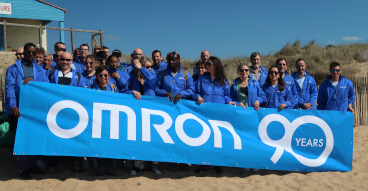
From red lights to robots: OMRON celebrates 90 years of innovation
06 June, 2023 This year on Founder’s Day, OMRON looked back on 90 years of pushing technological boundaries, and looks forward to a future of automation innovation framed by sustainability, digitalisation and human-machine collaboration.May the 10th be with you… Every year, 10th May is probably the most important day in OMRON’s calendar. On this day, 30,000 OMRON employees around the world celebrate the life and legacy of the company’s founder, Kazuma Tateishi. They do this by recommitting to Tateishi’s vision of using technology to create a better world and by giving back to society - often by participating in volunteer and charity projects in their communities. Innovation Milestones OMRON's journey of innovation began in 1933 with the development of a high-precision timer for X-ray photography. This marked the company's first contribution to addressing societal needs. In 1960, OMRON unveiled the world's first non-contact proximity switch, revolutionizing advanced mass production capabilities. Since then, OMRON has continued to introduce groundbreaking technologies, including the first automatic traffic signal, unmanned train station system, wearable blood pressure controller, ultra-high-speed fuzzy logical controller, and automatic cancer cell diagnostic equipment.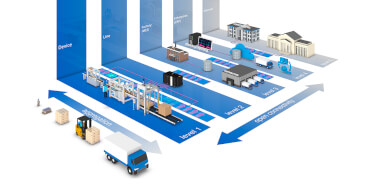
Transitioning from manual record keeping to fully automated traceability
11 May, 2023 In the fifth and final blog in this series on Traceability we will discover how machine vision technology has been taking on an increasingly important role in traceability because thanks to its effective way of maintaining complete product integrityVision inspection includes a wide variety of functionality such as detecting defective products in real time and performing both OCR and OCV to verify that the data on labels and packages adds up. By functioning as a complete solution for ensuring that non-conforming products don’t go out into the market, vision systems are vital for brand protection.The hurdle that manufacturers face in implementing a machine vision system is twofold. Such systems are often expensive to implement, and the complexity of the technology can overwhelm operators. Many applications require special programming. However, these challenges are offset by the fact that a single product recall or fine for tainted product – preventable by a vision system – could cost more than the vision system itself.The avoidance of unwanted complexity isn’t just a deterrent to using machine vision – it’s often a reason why manufacturers forego upgrading their traceability systems in any way. Because implementing a new system seems inordinately complex, many manufacturers prefer to stick with cumbersome and error-prone record keeping methods that rely on manual processes. It’s understandable that companies want traceability to be easy. However, failing to upgrade the system with automation actually leads to more work in the long run.Manual record keeping is far more widespread in the food and beverage packaging industry than it should be, especially when one considers the huge costs associated with certain types of mistakes. Unfortunately, not all companies have the budget to invest in good traceability software. Budgetary constraints and the fact that traceability solutions need to be scalable are major barriers to automating the system.OMRON strives to make traceability as easy as possible, just as it strives to make its machine vision technology intuitive enough for the average operator to use. Its MicroHAWK barcode readers keep things simple by working right out of the box – in fact, the browserbased WebLink interface allows manufacturers to start using the readers without needing to install any software whatsoever. OMRON also has extensive knowledge of how traceability works in a variety of industries, and its focus on providing comprehensive solutions with complete line integration lets companies rest assured that the upgraded system will “just work.”Although often perceived to be challenging and somewhat expensive at the outset, a robust traceability system is the single most important means of complying with industry regulations and reducing the incidence and cost of recalls. OMRON’s traceability solutions address various pain points that manufacturers face in the food and beverage packaging industry so that real-time, automated traceability is within the reach of any company that needs to comply.
Using traceability to analyse and optimise productivity
04 May, 2023 In the fourth blog in this series on Traceability we will discover how the use of traceability can add value to the production process by optimising productivity.In addition to helping companies avoid recalls and other disruptions to their profitability, traceability systems are also a great way to optimise processes and evaluate overall equipment effectiveness (OEE). By collecting and analysing operational data, manufacturers can figure out which machines are under-performing and pinpoint precisely where bottlenecks are occurring in production.In order to gather this data, manufacturers need to set up numerous code reading stations at various points across the production line. Barcoding helps track vital productivity information such as throughput and quality based on package type, machine, shift and product. In many cases, this means that barcode readers need to be embedded within machinery. This poses a challenge, since most manufacturing equipment is designed to take up as little space as possible and therefore doesn’t have much extra room for barcode readers. This creates the need for ultracompact readers.These ultra-compact industrial barcode readers and smart cameras are designed to be highly flexible and configurable within an exceptionally compact casing. This means that they can be easily embedded within machinery while still providing fast and accurate reading. Thanks to their liquid lens autofocus technology, the readers eliminate constraints on camera positioning. The same camera can be used for machine vision inspection, enabling the expansion of automation as a facility’s needs evolve without investment in new hardware.Once traceability data is gathered via the barcode readers, it needs to be communicated to the rest of the system. This poses a new challenge – that of using this data without hampering control performance. When traditional controllers are tasked with processing large amounts of traceability data, they are liable to slow down the production cycle time.Automation manufacturers have addressed this issue by developing controllers that can maintain high-speed control while handling all the information a traceability system provides. For example, controllers can be used for a packaging machine with the capability of handling 1,000 products per minute and can collect all traceability data in synchronisation with the production cycle while performing motion control. This means that traceability doesn’t need to slow down other aspects of production while fulfilling the purpose of collecting important data. Barcode readers provide direct connectivity via Ethernet/IP to the controllers, making it simple to integrate traceability data into the automated system. When it comes to utilizing traceability information, the data collection is one challenge. It’s another matter altogether to transfer that data to the business and enterprise systems that store and use the data. Controllers can make this easy thanks to the seamless incorporation of SQL and OPC-UA.
Combatting counterfeiting, promoting ethical sourcing and minimising recalls
26 April, 2023 In the third blog in this series on Traceability we will discover how counterfeiting has become a major issue in the food and beverage sector and how effective labelling can aid in a host of verification related tasks.Counterfeiting has become a major problem in the food and beverage industry as the market becomes more globalised. Several types of fraud exist, they can appear alone or in a combination in food fraud.Dilution - mixing a liquid ingredient of high value with a liquid of lower value.Substitution - replacing an ingredient, or part of the product, of high value with another ingredient, or part of the product of lower value.Concealment - hiding the low quality of food ingredients or product.Mislabelling - placing false claim on packaging for economic gain.Unapproved enhancement - adding unknown and undeclared materials to food products to enhance the quality attributes.
Complying with industry regulations
20 April, 2023 In the second blog in this series on Traceability we will discover how complying with industry regulations is essential in today’s manufacturing process, especially in industries like food, beverage and pharmaceutical and what the legal requirements are set out by the FSA.A lack of a comprehensive traceability system can potentially have disastrous outcomes for everyone in the supply chain, from producer to consumer. Paper does not control anything. It is just a written record, there’s no validation, and no control.In the food and beverage industry, authenticity is essential. Consumers need to know that the foods they are purchasing consist of the things listed on their labels, as food allergies and expired foods can cause serious illness and possibly death. Since both public health and consumer satisfaction depend so heavily on product integrity, the food and beverage packaging industry is highly regulated.One of the main things mandated by food and beverage regulation is “traceability” the practice of maintaining thorough records on the origins and whereabouts of products and raw materials by scanning printed barcodes, direct part marks (DPMs) or radio frequency identification (RFID) tags throughout the production process and the supply chain. From raw materials supplier to production line to supermarket to customer, the creation and distribution of a particular food item should be as transparent as possible.Food and beverage manufacturers also benefit directly from traceability protocols that minimise the occurrence and effect of costly issues such as product recalls by providing real-time data on supplier materials, processes and machinery involved in production. These protocols can significantly reduce cost of a recall by isolating tainted items and making it unnecessary to pull large amounts of non-tainted product off the shelves.Regulations are one of the primary forces spurring food and beverage manufacturers to adopt robust traceability systems. In the United Kingdom, the foremost source of regulation is the Food Standards Agency.After a number of high-profile outbreaks of food related illnesses in 2000, the Food Standards Agency (FSA) was established as an independent government department working to protect public health and consumers’ wider interests in relation to food in England, Wales and Northern Ireland.In the wake of Brexit, food and beverage regulations in the United Kingdom have changed and evolved while retaining some relevant provisions laid out in EU legislation. While Northern Ireland remains subject to EU law alone, Great Britain, Wales and Scotland fall under the provision of the Food Standards Agency (FSA) as the government organisation responsible for setting and enforcing traceability requirements.A quick reference guide published by FSA specifies that food business operators (FBOs) must maintain traceability information for suppliers and customers—equivalent to the “one step forward, one step backward” model which means they must be able to identify the businesses to which their products have been supplied and to trace food chain inputs back to the immediate supplier.
4 Steps to Optimise Manufacturing Operations Using Production Data
17 April, 2023 Bottlenecks and other production issues are the scourge of efficiency, costing businesses thousands, if not millions, a year through delays, disruptions, wasted resources, and lost output. Based on your assets (staff, equipment, facilities, etc.), what should your business be capable of producing? Most businesses have at least done a back of an envelope calculation on what their optimum output could be, if not taken the time to do a detailed analysis breaking down every process in the production chain. How far off is your actual throughput compared to the best-case scenario? In highly competitive markets with shrinking margins and a challenging economic forecast, businesses have to find ways to maximise their operations, getting as close as possible to optimal performance. They can no longer accept inefficient processes such as:Unbalanced assembly linesLong changeover timesMinor discrepancies compounding to increase the failure ratePoor equipment efficiency or extended maintenance downtimeUntrained staff slowing productionThankfully, manufacturing has come a long way. With the integration of new technologies (robotics, IoT, AI, etc.), companies can generate and track considerable production data. However, having data is just the start. To impact your operations for the better, businesses must derive actionable insights from it. Listed below are four steps to help businesses identify and resolve production issues.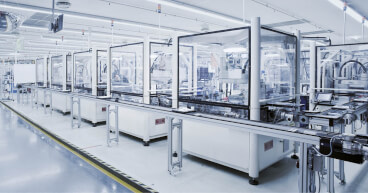
3 Reasons Leasing De-Risks Investments in Robotics
17 April, 2023 With skyrocketing energy bills, supply chain chaos, high interest rates, staff shortages, and the cost of living crisis reducing consumer demand, UK businesses feel like they are being hit from all sides at the moment.The economic outlook is challenging. Rising costs are squeezing profit margins forcing companies to charge higher prices or reduce output. In fact, the UK economy is the only G7 member yet to rebound to its pre-pandemic size. Industries struggling include manufacturing, which shrank by 4% in 2022 and is expected to decline another 3.2% in 2023, and logistics, which saw low levels of new warehousing space requirements at the end of last year. Companies looking to upgrade or expand are being held back by difficult economic conditions, in particular higher borrowing costs. When credit is cheap and readily available, businesses can make significant capital expenditure (capex) investments, transforming their operations to reduce costs in the long run or increase output and boost revenue. For manufacturing and logistics companies, high interest rates reduce the viability of investing in new technologies such as collaborative robots (cobots) and autonomous mobile robots (AMRs). In competitive industries where productivity is key, this puts many operations at risk of falling behind the competition. Thankfully, there is another option available. OMRON offers leasing options to help businesses acquire market-leading equipment without the risks associated with capex investments during tough economic times. Leasing advanced robotic equipment provides critical financial and operational benefits for companies looking to upgrade their operations.
Beyond tech for tech’s sake: What happens when industrial automation meets operational excellence
30 November, 2024 The past few years have seen rapid technological advancements, with the rise of AI standing out as a key trend. In a survey of manufacturers across the UK, US, and Canada, 70% said they had implemented some form of AI into their operations. This willingness to embrace new technologies is impressive, especially since manufacturing industries have so much to gain from automation.
Taking the first steps to successful digitalisation
12 November, 2024 Building a digital factory isn’t an end or a reason in itself. A digital factory is a tool that gives manufacturing businesses the flexibility to respond to changes in the market - whether that is innovation trends or cost increases, and whether they are operating in the food & beverage, personal care, pharmaceutical or automotive sector.
Avoiding efficiency blockage: Why companies should not postpone their robotics plans?
24 September, 2024 Delaying investments in innovative technologies is associated with numerous risks. Companies that are still hesitant should ask themselves three questions.The European economy faces a range of challenges that impact its growth, stability, and competitiveness. Europe, for example, has one of the oldest populations in the world. An aging workforce increases the burden on social security systems and reduces the labor supply, potentially slowing economic growth. Furthermore, the EU's commitment to the Green Deal and achieving carbon neutrality by 2050 requires substantial investments and structural changes in various sectors. Added to this is a lack of willingness to invest due to financial worries. A recent study by the McKinsey Global Institute (MGI) found that large European firms with more than $1 billion in revenue have fallen behind their US counterparts. They collectively invest $400 billion a year less and grow one-third more slowly.This investment fatigue can lead to several problems that have both short- and long-term effects, including disadvantages in terms of competitiveness, sustainability, and reputation, lower productivity, and less success in attracting new skilled workers. Innovative robotics can counteract such developments but also requires well-thought-out financing. Therefore, companies that are currently limiting their investments should urgently ask themselves whether this will not have more negative consequences for them in the long term than short-term savings. The following three questions should be the focus of such considerations:
Digitising with open standards: the recipe for a good night’s sleep
02 September, 2024 Can we commit to the predictions I have made? Will we be able to deliver to the deadline? Do I have enough insight to know for sure? How is the factory doing in terms of QCDE (quality, cost, delivery time and environmental impact) against our targets and compared to the competition? These are some of the concerns that keep factory managers awake at night; concerns that can be addressed through digitisation. In a digitised production environment, factory managers don’t have to worry about the unknowns, the risks and the might-happens. Digitisation eliminates uncertainty and enables performance-driven optimisation. It provides insights that can help factory managers improve quality, reduce cost, shorten lead times and reduce environmental impact. The manager of a digitised factory shouldn’t wake up worrying in the middle of the night, but if they do, a brief glance at their mobile phone should reassure them that everything is running as it should be. However, moving from a state of anxiety-induced insomnia to one of blissful somnolence is not easy. Put bluntly, digitisation can be quite tedious. Project leaders rarely have the luxury of working with a blank canvas; most of the time they are working with a patchwork quilt of old technologies sewn together; they are trying to digitise production lines incorporating machines that have never logged data and were built before data communication protocols even existed. This all adds up to a sizeable OT and IT integration challenge.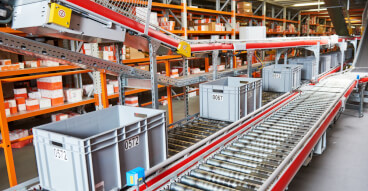
Transforming Logistics with Automation: Meeting Diverse Client Demands
05 June, 2024 The logistics landscape is evolving, with clients increasingly expecting comprehensive services, including personalised, customised, and seasonal packaging alongside various value-added services.Personalised Packaging:Consumers now want products that meet their exact specifications. This trend spans from everyday items to luxury goods, making it challenging to ensure the correct product is paired with the appropriate personalised packaging. The personalised packaging market is growing at over 5% annually. Surveys indicate that over half of consumers are more likely to repurchase from a vendor if they receive a product in personalised packaging.Customised Packaging:Customised packaging caters to specific client branding requirements to appeal to particular market segments, such as bulk-to-brand packaging in the retail sector for products like instant coffee, baby formula, or sealed foods. This often necessitates batch runs, which can be inefficient for manufacturers. Market research by Nielsen shows that 55% of consumers are willing to pay more for products designed for their segment or demographic group.Seasonal Packaging:Seasonal packaging significantly influences consumer buying decisions. A survey by the Paper and Packaging Board found that 44% of consumers say festive packaging increases their excitement about a product. Additionally, 60% of consumers are likely to share pictures of seasonally packaged products on social media, enhancing brand visibility and engagement.Many clients now request value-added services, including co-packing, labelling, and other enhancements that prepare the product for the consumer market.
The Future of Storing and Moving Stuff: Why Trying New Things and Teamwork Matter
10 April, 2024 In the rapidly evolving world of logistics, the industry dedicated to storing and moving goods is at a pivotal moment, marked by both unprecedented growth and daunting challenges. Over the last decade, storage space, particularly in the form of warehouses, has seen a remarkable expansion. Specifically, shed space has grown by 61% in the last decade and an impressive 22% in just the last three years. Despite the recent slowdown in e-commerce activity caused by the increased cost of living, the trend since 2015 is overwhelmingly positive and will continue to drive a strong demand for warehouse space in the future. However, as these storage spaces become more common, the industry faces a significant challenge: a growing labour shortage that threatens to slow down its expansion.
What’s in store for automation in 2024? Six predictions from OMRON Europe
13 December, 2023 The succession of shocks over the last few years has heralded a new era of heightened geopolitical and economic risk. This is prompting manufacturers to build resilience and flexibility into business models and rethink global supply chains and relationships. At the same time, pressure is mounting to incorporate ESG principles into operational decision making. AI, data science, digital twins and sensing, monitoring and vision technology will all be essential to developing automation and control solutions that can help the manufacturing industry adapt to this new reality. In this context, I would like to share the top six trends that will impact and shape industrial automation in 2024 and beyond.
A meeting of minds: IT/OT convergence in industrial automation
22 September, 2023 Future-focused manufacturers are edging closer to their ideals of flexible, efficient and sustainable production by exploring digital transformation in earnest. However, as interest in digitalisation builds, it is becoming apparent that a huge gulf exists between the worlds of OT (Operational Technology) and IT (Information Technology). And this divide needs to be bridged if today’s visions for factories of the future are to become tomorrow’s reality.But before we look at why a convergence of IT and OT is necessary and how this can be achieved, let’s take a step back to basics and clear up some misunderstandings around the terminology.
Empowering the workforce: OMRON's approach to skills development in European manufacturing
06 September, 2023 Delving into OMRON's unwavering commitment to nurturing skills that empower the next generation, while the industry embarks on a transformative journey – a journey that unlocks the full potential of the Fourth Industrial Revolution (4IR) while boldly moving towards the Fifth Industrial Revolution (5IR).In the halls of academia, the boardrooms of visionary business leaders, and the chambers of forward-thinking politicians, a fervent debate evokes. It revolves around the profound shift from the Fourth Industrial Revolution, 4IR, or Industry 4.0 as it is also known, to Industry 5.0 will change the world in which we live.Historically the Industrial Revolution was the First Machine Age, and electricity the Second, then electronics was the Third, and the internet as platform the Fourth Machine Age. We are now entering the Fifth Machine Age, which highlights harmonious human-machine collaboration and the contributions of the industry to society. This is the moment to not only adapt but to lead, to pioneer, and to create a future where innovation knows no bounds. Klaus Schwab, the founder and executive chairman of the World Economic Forum has observed that: “We stand on the brink of a technological revolution that will fundamentally alter the way we live, work, and relate to one another. In its scale, scope, and complexity, the transformation will be unlike anything humankind has experienced before. Our world is undergoing a transformative shift. Global production is evolving, driven by the automation of traditional industrial practices through smart technology, M2M communication, and IoT integration. This synergy fuels heightened automation, seamless communication, and intelligent machines that autonomously analyse and diagnose challenges.The rise of AI sparks debates, hinting at deeper transformations within our societal tapestry. As we navigate this dynamic landscape, we are poised to embrace innovation and reshape our future.
From red lights to robots: OMRON celebrates 90 years of innovation
06 June, 2023 This year on Founder’s Day, OMRON looked back on 90 years of pushing technological boundaries, and looks forward to a future of automation innovation framed by sustainability, digitalisation and human-machine collaboration.May the 10th be with you… Every year, 10th May is probably the most important day in OMRON’s calendar. On this day, 30,000 OMRON employees around the world celebrate the life and legacy of the company’s founder, Kazuma Tateishi. They do this by recommitting to Tateishi’s vision of using technology to create a better world and by giving back to society - often by participating in volunteer and charity projects in their communities. Innovation Milestones OMRON's journey of innovation began in 1933 with the development of a high-precision timer for X-ray photography. This marked the company's first contribution to addressing societal needs. In 1960, OMRON unveiled the world's first non-contact proximity switch, revolutionizing advanced mass production capabilities. Since then, OMRON has continued to introduce groundbreaking technologies, including the first automatic traffic signal, unmanned train station system, wearable blood pressure controller, ultra-high-speed fuzzy logical controller, and automatic cancer cell diagnostic equipment.
Transitioning from manual record keeping to fully automated traceability
11 May, 2023 In the fifth and final blog in this series on Traceability we will discover how machine vision technology has been taking on an increasingly important role in traceability because thanks to its effective way of maintaining complete product integrityVision inspection includes a wide variety of functionality such as detecting defective products in real time and performing both OCR and OCV to verify that the data on labels and packages adds up. By functioning as a complete solution for ensuring that non-conforming products don’t go out into the market, vision systems are vital for brand protection.The hurdle that manufacturers face in implementing a machine vision system is twofold. Such systems are often expensive to implement, and the complexity of the technology can overwhelm operators. Many applications require special programming. However, these challenges are offset by the fact that a single product recall or fine for tainted product – preventable by a vision system – could cost more than the vision system itself.The avoidance of unwanted complexity isn’t just a deterrent to using machine vision – it’s often a reason why manufacturers forego upgrading their traceability systems in any way. Because implementing a new system seems inordinately complex, many manufacturers prefer to stick with cumbersome and error-prone record keeping methods that rely on manual processes. It’s understandable that companies want traceability to be easy. However, failing to upgrade the system with automation actually leads to more work in the long run.Manual record keeping is far more widespread in the food and beverage packaging industry than it should be, especially when one considers the huge costs associated with certain types of mistakes. Unfortunately, not all companies have the budget to invest in good traceability software. Budgetary constraints and the fact that traceability solutions need to be scalable are major barriers to automating the system.OMRON strives to make traceability as easy as possible, just as it strives to make its machine vision technology intuitive enough for the average operator to use. Its MicroHAWK barcode readers keep things simple by working right out of the box – in fact, the browserbased WebLink interface allows manufacturers to start using the readers without needing to install any software whatsoever. OMRON also has extensive knowledge of how traceability works in a variety of industries, and its focus on providing comprehensive solutions with complete line integration lets companies rest assured that the upgraded system will “just work.”Although often perceived to be challenging and somewhat expensive at the outset, a robust traceability system is the single most important means of complying with industry regulations and reducing the incidence and cost of recalls. OMRON’s traceability solutions address various pain points that manufacturers face in the food and beverage packaging industry so that real-time, automated traceability is within the reach of any company that needs to comply.
Using traceability to analyse and optimise productivity
04 May, 2023 In the fourth blog in this series on Traceability we will discover how the use of traceability can add value to the production process by optimising productivity.In addition to helping companies avoid recalls and other disruptions to their profitability, traceability systems are also a great way to optimise processes and evaluate overall equipment effectiveness (OEE). By collecting and analysing operational data, manufacturers can figure out which machines are under-performing and pinpoint precisely where bottlenecks are occurring in production.In order to gather this data, manufacturers need to set up numerous code reading stations at various points across the production line. Barcoding helps track vital productivity information such as throughput and quality based on package type, machine, shift and product. In many cases, this means that barcode readers need to be embedded within machinery. This poses a challenge, since most manufacturing equipment is designed to take up as little space as possible and therefore doesn’t have much extra room for barcode readers. This creates the need for ultracompact readers.These ultra-compact industrial barcode readers and smart cameras are designed to be highly flexible and configurable within an exceptionally compact casing. This means that they can be easily embedded within machinery while still providing fast and accurate reading. Thanks to their liquid lens autofocus technology, the readers eliminate constraints on camera positioning. The same camera can be used for machine vision inspection, enabling the expansion of automation as a facility’s needs evolve without investment in new hardware.Once traceability data is gathered via the barcode readers, it needs to be communicated to the rest of the system. This poses a new challenge – that of using this data without hampering control performance. When traditional controllers are tasked with processing large amounts of traceability data, they are liable to slow down the production cycle time.Automation manufacturers have addressed this issue by developing controllers that can maintain high-speed control while handling all the information a traceability system provides. For example, controllers can be used for a packaging machine with the capability of handling 1,000 products per minute and can collect all traceability data in synchronisation with the production cycle while performing motion control. This means that traceability doesn’t need to slow down other aspects of production while fulfilling the purpose of collecting important data. Barcode readers provide direct connectivity via Ethernet/IP to the controllers, making it simple to integrate traceability data into the automated system. When it comes to utilizing traceability information, the data collection is one challenge. It’s another matter altogether to transfer that data to the business and enterprise systems that store and use the data. Controllers can make this easy thanks to the seamless incorporation of SQL and OPC-UA.
Accelerating socially driven innovation
28 March, 2023 Society is built on cultural norms and values that shape how people think, behave, and interact with each other. These cultural factors can influence everything from consumer preferences and business practices to political beliefs, which in turn affect how manufacturing evolves.Manufacturing is one of the most important sectors of any economy, yet in the UK it can fairly claim to be underrated - despite our being the world’s 9th largest manufacturing nation. According to MAKE UK research, manufacturing provides 2.7 million jobs, has an annual output of £191 billion, and offers wages 13% higher, on average, than the rest of the economy.The sector also has a multiplier effect which extends far beyond the jobs and wealth it creates directly, supporting the growth of other industries and creating a positive cycle of economic growth - boosting the overall productivity of the country and improving lives.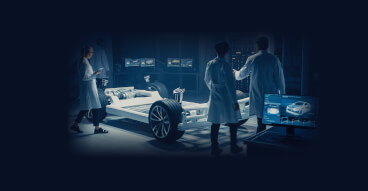
Why automated inspection systems are critical for electric vehicle manufacturing
23 March, 2023 Safety trumps all other concerns in the automotive industry, and electric vehicle manufacturing is no exception. However, safety can also introduce complexity, and the complexity of today’s vehicles – particularly EVs – is such that manufacturers are no longer able to rely on traditional sample or audit-based inspection methods.
Top 5 automation predictions for 2023 from OMRON Europe
01 February, 2023 While a new year is upon us, with all its opportunities, I'd like to highlight some of the top trends that will impact and shape industrial automation in 2023 and beyond. The manufacturing industries will continue to face many challenges, and riding them out will involve building resilience and flexibility into business models. At the same time, companies must embrace emerging technologies - sensing, robotics, 5G and artificial intelligence - to help them solve the problems they face due to societal challenges.
The path to net zero: talking tactics
01 February, 2023 The key to unlocking a net zero future in manufacturing is transforming the value chain through automation.In June 2022, New Scientist reported that a third of the world’s largest companies had net zero targets - significantly more than the same time last year.Whilst it is positive news that momentum is accelerating, the article went on to say that the details of how companies were planning to reach net zero were patchy.Which is not surprising really. Creating and implementing a net zero strategy is a huge undertaking for any business, especially with 80% of GHG emissions falling into Scope 3 - that is emissions that occur upstream or downstream in the value chain. This is a particular challenge for FMCG companies, whose supply chains and onward logistics are long and complex.Most of these businesses know what they need to do: decarbonise and circularise the value chain. And they have a strategy for doing this, which will generally cover: optimising the use of resources and energy, replacing high emission products and processes and eliminating waste.But translating intention into action is where the main challenge lies. This is where automation has a crucial role to play.Data collection and analysis is the key to successful net zero transition. Without it, how do companies know what their starting point is, where they need to improve, whether they have improved and by how much? Robust data is the foundation for turning a commitment into change, and for credibly and confidently communicating with stakeholders and delivering on climate ambitions.
Riders of the storm: navigating economic uncertainty by turning social challenges into tech opportunities
06 December, 2022 One of the questions I am often asked is what our strategy is, as an industrial automation business, for maintaining stable growth in a volatile and increasingly unpredictable global economy. My answer, as you might imagine, is not one sentence, although it is rooted in one concept: SINIC. SINIC stands for ‘Seed-Innovation to Need-Impetus Cyclic Evolution’ and is a theory that was developed by OMRON's founder, Dr. Kazuma Tateisi, in 1970. According to this philosophy, science, technology and society share a cyclical relationship, mutually impacting and influencing each other. Scientific breakthroughs help society to advance and social needs spur on technological development. OMRON Europe has always followed this philosophy, and has spent the last decade laying the foundations for creating value-adding solutions to present day social and economic challenges.
Digitalization in the automotive industry: Seven tips for smart production
02 November, 2022 If you want to grow and master crises, you have to be digitally fit – this also applies to the important automotive sector. There is no way around digital tools for addressing customers or productivity. Artificial intelligence (AI) and sustainability are key drivers and focus topics, as a study by Capgemini shows. Experts from Gartner point out the importance of open-source collaboration approaches, holistic ecosystems, and technology partnerships. But what should we look out for in digitalization and intralogistics in the production of the future? We want to answer this question in two parts. We start with tips on digitization in the smart factory. As an automation expert, OMRON has been accompanying manufacturers and suppliers on their way to more digitalization sophistication for many years.
Fuel for the future: What to look out for in fuel cell production
10 March, 2022 When people talk about sustainable mobility, the first thing that comes to mind is battery-powered e-cars. Fuel cells or direct hydrogen burners are complementary technologies that often fade into the background, yet have a lot to offer when it comes to CO₂ reduction and market options.
Green packaging industry: How to achieve sustainable manufacturing
09 February, 2022 Sustainability in the packaging industry is one of the key aspects in fighting the plastic waste issue and ultimately climate change. The challenges that this presents, require flexible and powerful automation technology.
Fuelling the success of local battery cell production
20 September, 2021 Expert and automotive manufacturers alike agree that e-mobility is the future. Batteries and battery manufacturing are central to this development. In this context, the global market for lithium-ion batteries is expected to grow from 44.2 billion US dollars (2020) to 94.4 billion dollars (2025). The transformation of the automotive industry from internal combustion engines to battery or hydrogen-powered fuel cells is presenting companies with immense challenges.
Plastics in consumer goods manufacturing: Seven automation tips for greener packaging
29 April, 2021 Hygiene or environmental protection? Preferably both! Companies in the consumer goods industry are increasingly asking themselves what alternatives they have to plastic packaging and how they can act greener, more efficiently, and yet still safely. Innovative packaging lines, robotics and artificial intelligence offer support.
Powering the European automotive industry
29 January, 2021 The European automotive industry is facing strong competition from Asia, as well as the economic challenges of the pandemic. It needs to develop innovative, future-proof strategies and technologies that will boost both efficiency and sustainability. Tony Seba from Stanford University believes that by 2025, no more new vehicles with (pure) combustion engines will be sold and there will be a move towards battery or hydrogen-powered fuel cells. Meanwhile, the industry faces falling sales, increasingly strict emissions regulations, new technologies, digitisation and changing consumer needs. Companies must respond by converting their production lines; becoming more agile; and introducing innovations that provide a competitive edge.